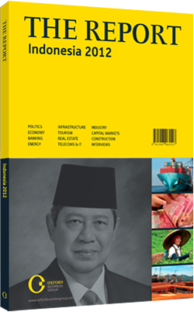Kalbe Farma: Pharmaceuticals
THE COMPANY: In line with expectations, Kalbe Farma (KLBF) reported increased earnings in the first half of 2011. Sales grew approximately 5.14% year-on-year (y-o-y) to Rp4.94trn ($592.8m). This figure is equal to around 44.07% of the full-year projection of Rp11.22trn ($2.38bn). Pharmaceutical packaging and distribution remained the major contributor to revenue, making up 30.31% of KLBF’s total revenue in the first half of 2011. Prescription pharmaceuticals followed close behind, contributing around 28.02%, equal to Rp1.38trn ($165.6m). Rounding out the list, nutritionals were 22.84 % of total revenue in the same period, and the consumer health division contributed around 18.83%.
The prescription pharmaceuticals division continues to maintain its solid performance. In first-half 2011, KLBF’s prescription sales rose by 10.42% y-o-y to Rp1.38trn ($165.6m). On the back of consistent product diversification and further expansion in the coming years, KLBF’s prescription division should be able to preserve its significant contribution to the company’s total consolidated sales.
The consumer health division reported better growth in the first half of 2011. The division’s revenue grew by approximately 12.87% y-o-y to Rp931.86bn ($111.8m). KLBF’s strong brand equity and its significant market share are major contributing factors to the company’s continued positive growth in the sector.
DEVELOPMENT STRATEGY: KLBF’s continued innovation will also bring additional value. For example, Fatigon Hydro, an isotonic drink made from coconut water, has been well received in recent years, particularly within the natural foods market. KLBF’s consumer health division has launched several products in the past, as well as rejuvenated many of its existing products. Moving forward, KLBF’s continuous and consistent product diversification will serve to enrich the company’s product portfolio, potentially prompt further growth and strengthen its position in the market.
In recent years, the company has successfully managed its debt ratio. At the end of 2002 the firm posted a debt of around Rp1.01trn ($121.2m). Since that time, however, the KLBF’s total debt has steadily declined.
Assisted by strong internal cash, KLBF reported its debt had dropped 62.6% by 2006. With such declining debt and steady cash equivalent growth, KLBF is well positioned for the future.
OUTLOOK: As a result of KLBF’s strong business strategy, combined with its rapid product development and consistent acquisitions, it is estimated that the company’s sales could reach Rp11.22trn ($1.35bn) — 1.54% above the company’s forecast.
Additionally, the announcement that KLBF plans to launch between 10 and 15 new products, the construction of three new factories and the news that ethical drug sales grew 10% y-o-y, should further support the numbers forecasted for KLBF in 2011.
Indonesia’s domestic energy drink association has recently provided a positive outlook on the energy drink market. It expects the energy drink market to grow between 10% and 12% in 2011. This news can only benefit KLBF’s Extra Joss energy drink, which leads the energy drink market with 26% of market share.
Another positive indicator for KLBF, and indeed the sector as a whole, is that due to increased health spending in the country, the import of raw materials for pharmaceuticals production will grow between 12% and 13%, approximately Rp10.6trn ($1.27bn) — Rp10.7trn ($1.28bn), according to the Pharma Materials Management Club, a company that contributes to the development of Indonesia’s pharmaceuticals industry.
With such a positive outlook for the industry and KLBF’s strong presence in the domestic pharmaceuticals market, the pharmaceuticals entity is expected to continue its positive and steady growth in the years to come. Supported by its plan to strengthen its distribution network coverage and further develop its existing logistics infrastructure, as well as its continued efforts to diversify its products and enrich its total product portfolio, KLBF has positioned itself to remain highly profitable in the various segments of the industry.
You have reached the limit of premium articles you can view for free.
Choose from the options below to purchase print or digital editions of our Reports. You can also purchase a website subscription giving you unlimited access to all of our Reports online for 12 months.
If you have already purchased this Report or have a website subscription, please login to continue.

